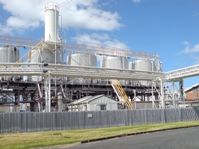UN reviews Juhua’s certified emissions reductions (CERs)
The UN is investigating a refrigerant manufacturer's alleged abuse of the carbon emissions reductions scheme.

 A panel of UN representatives will consider revoking funding to Juhua Group's greenhouse gas containment project in Zhejiang, China. The project is one of many which face discontinuation of funding provided by the UN's CER scheme.
A panel of UN representatives will consider revoking funding to Juhua Group's greenhouse gas containment project in Zhejiang, China. The project is one of many which face discontinuation of funding provided by the UN's CER scheme.
The UN created CERs to reduce global carbon emissions under the Clean Development Mechanism (CDM). The scheme, innovated by the Kyoto protocol, allows rich countries to 'outsource' their greenhouse gas emissions to emerging countries so that rich countries can meet their carbon emissions reductions targets. Companies can invest in clean energy projects then resell the emissions credits to countries for a profit. 2235 registered projects are currently estimated to generate US$1 billion in credits.
The Juhua Group Corporation is one of the top 500 companies in China. With its headquarters located in Hangzhou, the capital of Zhejiang Province, and a production base in Quzhou, it has approximately 100 major production units manufacturing 200 types of products, such as fluoro-chemicals and chemical raw materials. These include the refrigerant gas HCFC-22 which releases greenhouse gas HFC-23 as a byproduct of production.
The Juhua project is capturing HFC-23 by means of a newly innovated membrane installed in the steam decompression system. The membrane separates hydrogen and CO2. The CO2 is then channeled by a corrosion-resistant pipeline to an underground storage point where it is kept indefinitely rather than being released into the atmosphere.
In a press release, Juhua stated that it would install a superheated steam decomposition facility to extract the greenhouse gasses at the industrial site where the HCFC22 production occurs. It claimed that the project would curb carbon emissions,
'The most advanced technology [in] Japan is to be utilized to [accomplish] non-hazardous treatment of the HFC23 gas, the by-product generated production of the fluoric refrigerant HCFC22. The HFC23 is decomposed to hydrogen fluoride (HF) and carbon dioxide (CO2).Without this project, the HFC23 generated in this company will be emitted directly to the atmosphere as waste gas.'
The project will undergo an examination by the UN board to verify that this process is being carried out correctly. The board first met on July 25th-30th at Bonn, Germany to reassess several companies funded under the CDM after a report by non-profit organization, CDM Watch, alleged that companies were actually increasing the production of HFC-23 in order to destroy it and obtain CER credits. CDM Watch stated in a recent press release,
"Analysis of monitoring data from all registered HFC-23 destruction projects revealed that CDM HCFC-22 plants are intentionally operated in a manner to maximize the production of offset credits. The analysis indicates that because of the extra CDM revenue more HCFC-22 is produced and far more HFC-23 generated than would occur without the CDM."
Funding for four other Chinese HFC-23 containment projects will also be reviewed at an undisclosed date. The equivalent of carbon emissions reductions reported by the five projects totals 9.2 million tonnes.
Author: Cristina Brooks | Climate Action
Image: Ingolfson | Wikimedia






